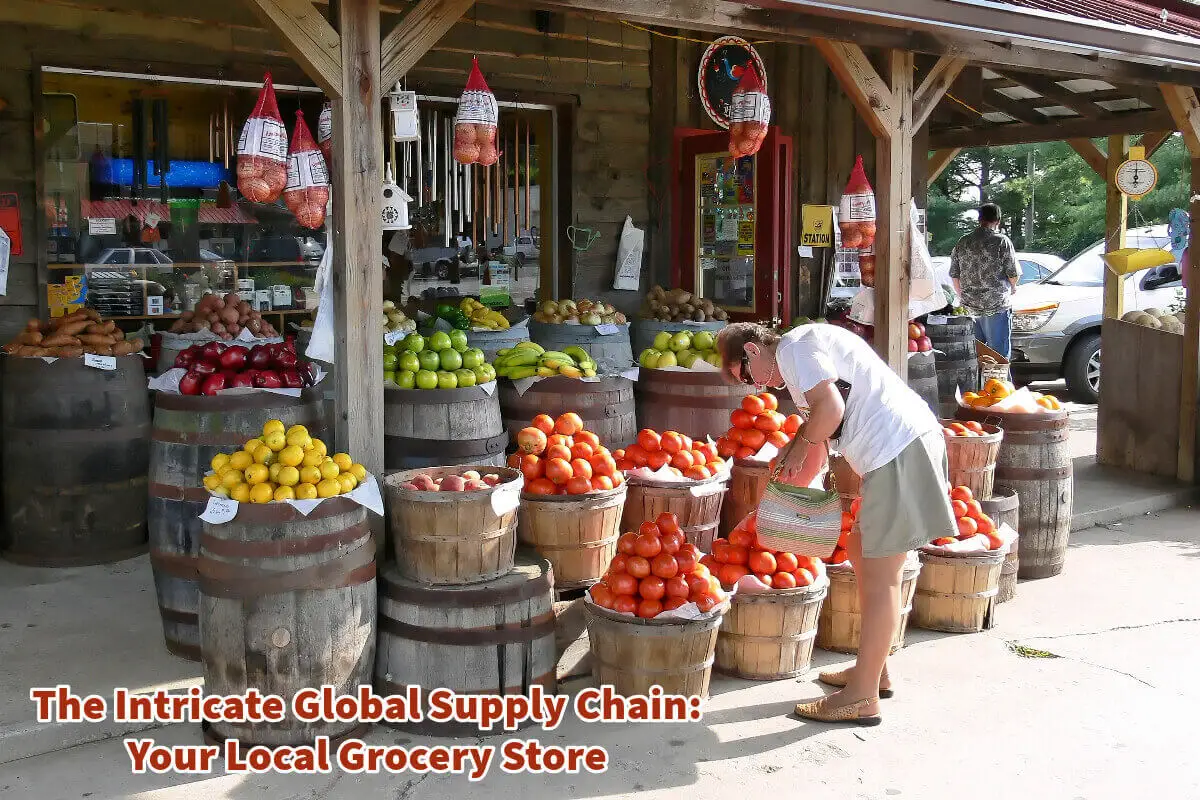Every time we step into our local grocery store, we are, perhaps unknowingly, interacting with a complex web of global networks that span continents, cultures, and climates.
The abundance and variety of products that line the shelves are tangible evidence of the vast reach and significance of the global supply chain. By diving deep into the functioning of our local grocery store, we can better appreciate the broader implications and workings of this intricate system.
Table of Contents
- The Intricate Web Of Global Supply Chain: Decoding Our Local Grocery Store
- Definition: Global Supply Chain
- 7 Reasons Why The Global Supply Chain Matters:
- Economic Growth And Development:
- Efficiency And Cost Savings:
- Consumer Access And Choice:
- Innovation And Technology Transfer:
- Risk Management:
- Interdependence And Diplomacy:
- Challenges And Accountability:
- Listen To Our Podcast About Behind The Global Supply Chain Of Local Grocery Store below or By clicking here.
- Related Content
The Intricate Web Of Global Supply Chain: Decoding Our Local Grocery Store
In our daily lives, we rarely consider our food’s journey before reaching our table. The sheer distance traveled, the various hands it passes through, and the countless systems in place to ensure its quality are often overlooked.
Yet, the comprehensive journey of something as simple as a head of lettuce is a living testament to the marvels of the global supply chain. Let’s delve deeper into how our local grocery store is a captivating epitome of this complex network.
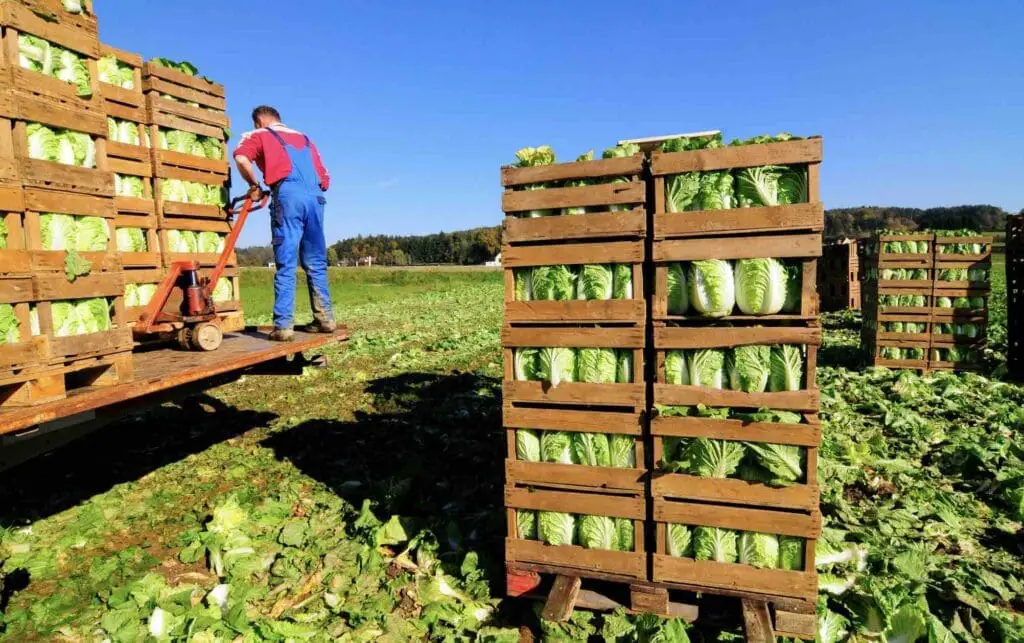
Complexity Of The Food Supply Chain
The food supply chain is not a linear path; it is a multifaceted maze with numerous stakeholders ensuring product quality and timely delivery. Especially when considering fresh produce, it’s not merely about transporting goods; it’s about retaining freshness, ensuring safety, and meeting consumer demands.
The Role Of Supermarkets
Supermarkets, especially those with multiple branches, have an entire ‘buying department’ dedicated to forecasting needs. They consider past sales, current stock, and future projections to determine the amount of fresh produce needed.
This predictive approach is crucial to ensure that demand is met but waste is minimized.
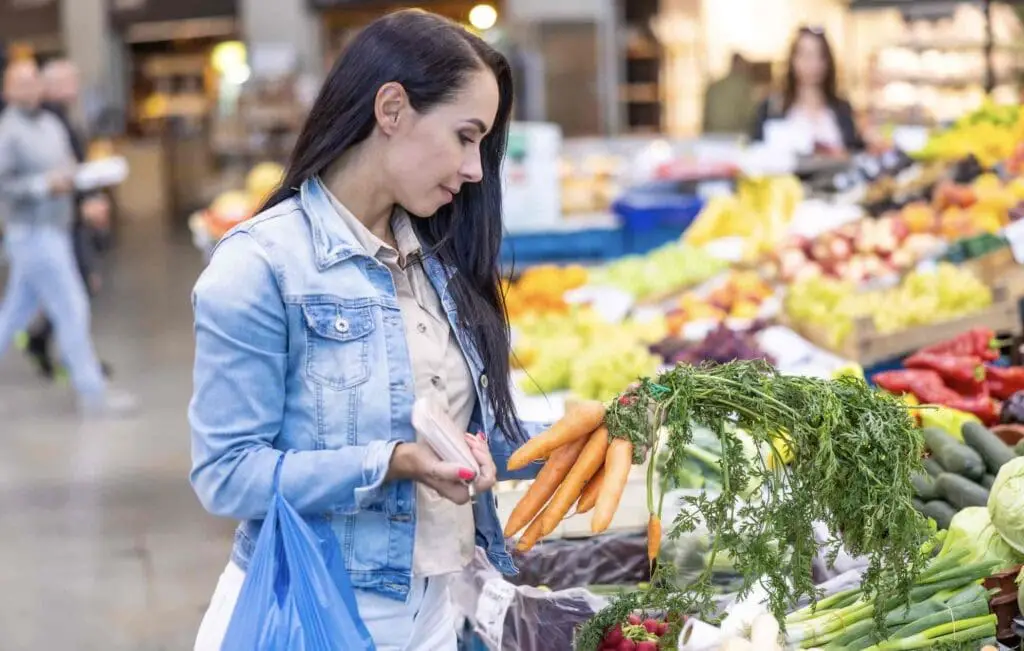
Interactions With Packer/Shipper
Upon deducing the requirements, the buyer from the supermarket liaises with a packer or shipper. They are the bridge between the farms that grow the produce and the stores that sell it.
The packer, understanding the quantity and timelines, gets in touch with the growers, who might even have dedicated contracts to grow specific products for them.
From Farm To Store: A Journey Of Preservation
Most produce today is packed right in the field, signifying the start of its journey to the consumer. The freshly packed produce doesn’t stay long under the sun.
It’s swiftly transported to the shipper’s cooler, ensuring freshness is trapped at the source. Upon arrival, quality checks are performed, both by representatives of the shipper and by regulatory authorities, such as the US Department of Agriculture.
Interestingly, often before the produce is harvested, refrigerated transport is already on standby. As soon as the produce is quality-checked and chilled, it’s loaded onto this vehicle, ready for its journey to the buyer’s Distribution Center (DC).
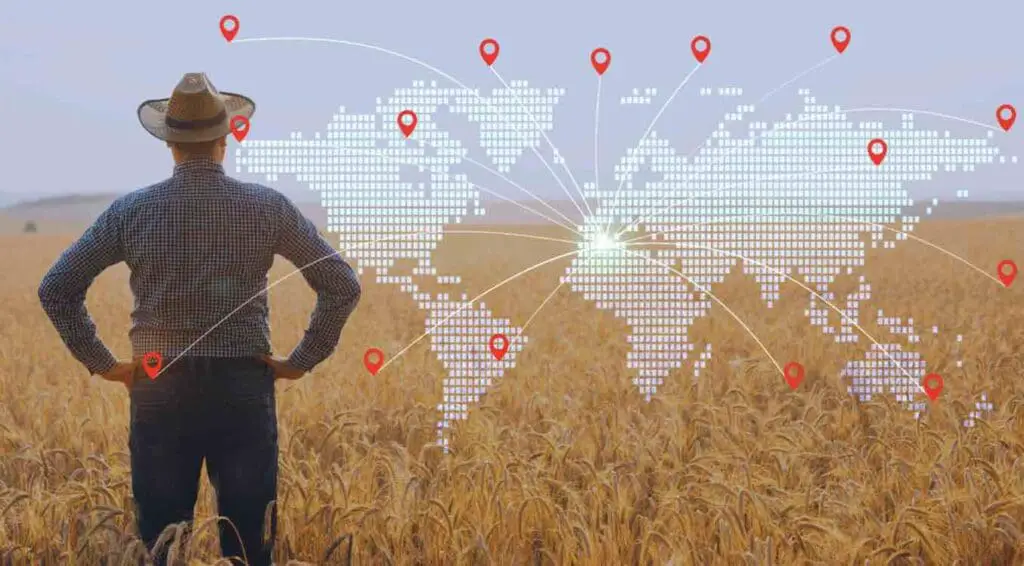
Multiple Checkpoints: A Testament To Quality
Once the produce reaches the buyer’s DC, it isn’t just dumped onto the shelves. It goes through another round of rigorous inspections, ensuring the right temperature and quality aren’t compromised during transportation.
Another transport carries the produce from the DC to our local supermarket’s final destination. Here, again, the produce undergoes checks before gracing the shelves.
A Time-sensitive Operation
It’s not just about getting the produce from point A to point B; it’s about doing it swiftly. Given the perishable nature of most produce, there’s a tight timeline. The fact that our fresh lettuce has passed through numerous stages and retains freshness upon reaching us is an incredible feat of logistics and coordination.
The journey of our daily vegetables and fruits is nothing short of an orchestrated ballet, with each dancer knowing their steps to perfection. Our local grocery store is a testament to this global supply chain’s efficiency and complexity, ensuring we get fresh, quality produce daily.
The next time you pick up that head of lettuce, take a moment to appreciate the marvel of coordination and effort behind it. It’s a story of globalization, dedication, and the unyielding human spirit to provide the best against all odds.
Definition: Global Supply Chain
As this example of the grocery store showed us, a global supply chain is essential. The global supply chain affects our everyday life.
The global supply chain refers to a dynamic and interconnected network of suppliers, manufacturers, logistics providers, distributors, retailers, and other entities across different countries and regions involved in producing, handling, storing, and distributing goods and services.
It encompasses the entire lifecycle of a product, from sourcing raw materials to delivering the final product to the end consumer.
7 Reasons Why The Global Supply Chain Matters:
Numerous factors underscore the importance of the global supply chain in our world’s economy. Read on as we highlight seven pivotal reasons that showcase the critical role of the global supply chain.
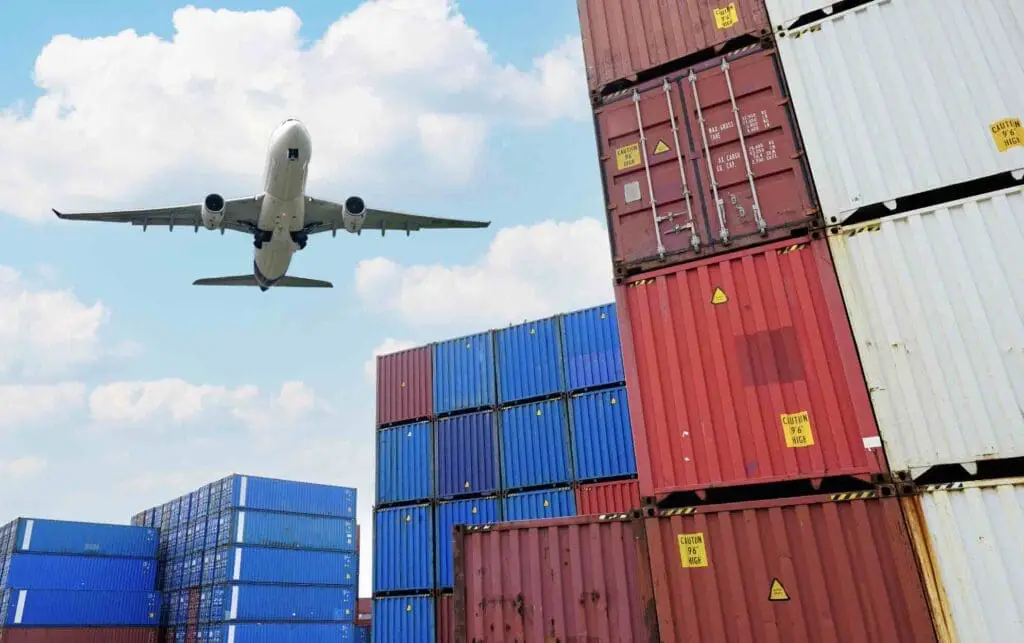
Economic Growth And Development:
Global supply chains play a significant role in the global economy. They contribute to GDP growth, create jobs, and facilitate trade between countries.
Efficiency And Cost Savings:
Companies can source materials and manufacture products where it’s most cost-effective, leading to reduced costs, better consumer prices, and optimized production processes.
Consumer Access And Choice:
Thanks to global supply chains, consumers worldwide can access a diverse range of products throughout the year, regardless of seasonal or regional restrictions.
Innovation And Technology Transfer:
The interconnectedness fosters the sharing of technology, knowledge, and best practices across borders, leading to innovation and advancements in various sectors.
Risk Management:
A diversified supply chain can help companies mitigate risks. Companies can potentially source from alternative locations if there’s a disruption in one part of the world (due to natural disasters, political unrest, or other reasons).
Interdependence And Diplomacy:
As nations become economically interdependent, they often become stakeholders in each other’s stability and prosperity, which can foster diplomatic relations and global peace.
Challenges And Accountability:
Conversely, global supply chains also mean lapses in one region (like environmental neglect or labor rights violations) can have global repercussions. This interdependence underscores the importance of ethical practices and corporate social responsibility.
The global supply chain is a testament to our world’s interconnectedness. It’s the backbone of global trade, influences economies, impacts our daily lives, and shapes the geopolitical landscape. However, with its significance comes the responsibility for businesses and nations to ensure they operate sustainably and ethically.
Listen To Our Podcast About Behind The Global Supply Chain Of Local Grocery Store below or By clicking here.
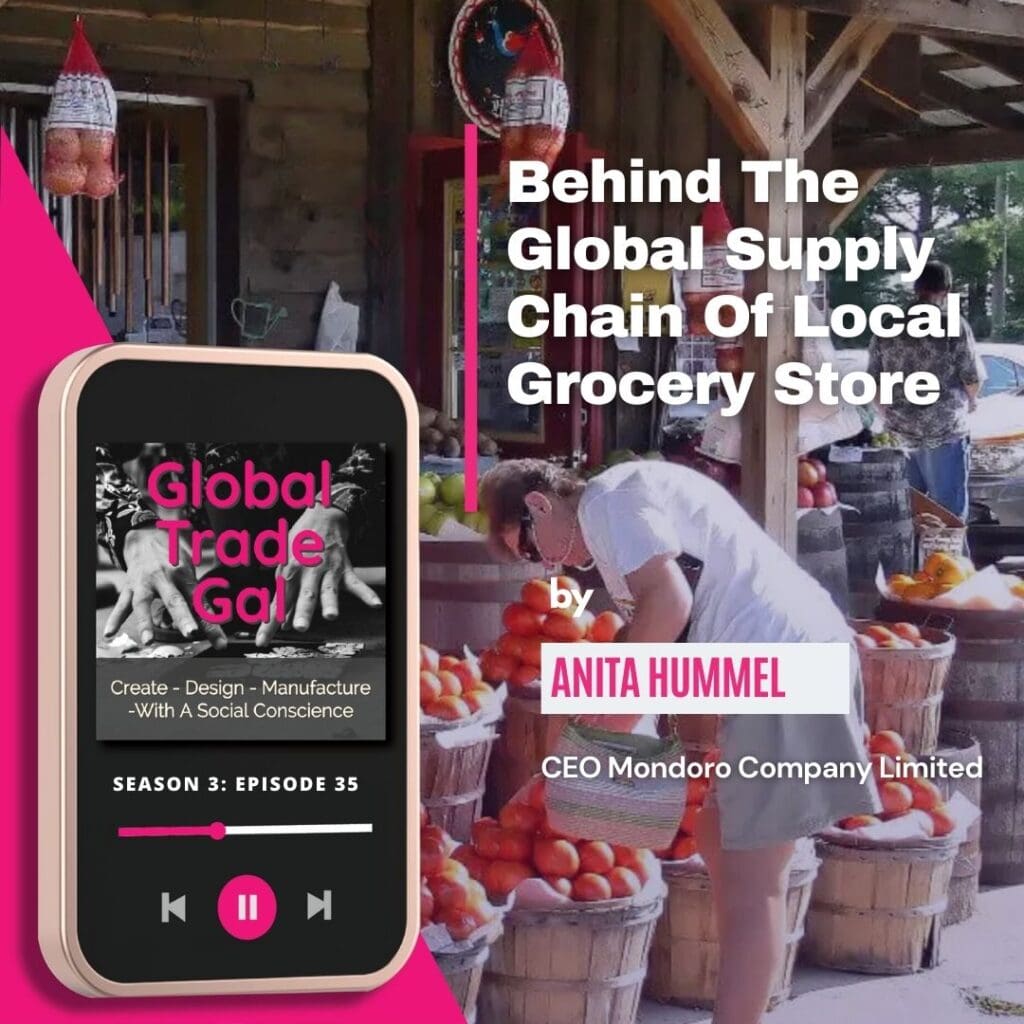
If you are interested in seeing how Mondoro can help you with your supply chain – we would love to talk to you about how we can help you and be part of your global supply chain.
Find out more about how Mondoro can help you create, develop, and manufacture excellent home decor and home furniture products – don’t hesitate to contact me, Anita. Check out my email by clicking here or become a part of our community and join our newsletter by clicking here.
Mondoro gives out a FREE Lookbook to anyone interested. You can receive a copy of our latest Lookbook by clicking here.
Listen to our Podcast called Global Trade Gal. You can find it on all major podcast platforms. Try out to listen to one of our podcasts by clicking here.
Subscribe to our Mondoro Company Limited YouTube Channel with great videos and information by clicking here.
Related Content
How Do You Load A Dry Shipping Container?
A dry shipping container is a container that is used for 90% of all shipments worldwide. The dry shipping containers’ standard sizes are 20’, 40’, and 40’ HC container sizes. Each size has different payload weights and loading size limits, so when you prepare to load your container, what container size you choose will make a huge difference in the actual container loading.
To learn more about loading a dry shipping container, read our blog on 10 Tips On Loading A Dry Shipping Container, What You Need To Know by clicking here.
What Is The DUPRO or During Production Inspection?
The DUPRO Inspection is a product inspection conducted during the manufacturing phase of production. The DUPRO is also known as during the production inspection, as its main purpose is to find any errors during the product’s manufacturing phase. Most manufacturing errors are easier to fix during production than when the goods are completed.
You can learn more about DUPRO by reading our blog DUPRO, During the Production Product Inspection Guide by clicking here.
What Is The Difference Between Supply Chain Management and Logistics?
Supply chain management is about the collaboration and partnerships to get the goods from raw materials to the end consumer; it is about the partnerships and alliances within this process. Logistics is one part of supply chain management; logistics involves moving goods from one place to another.
To learn more about loading a dry shipping container, read our blog on What Is The Difference Between Supply Chain Management and Logistics? by clicking here.

